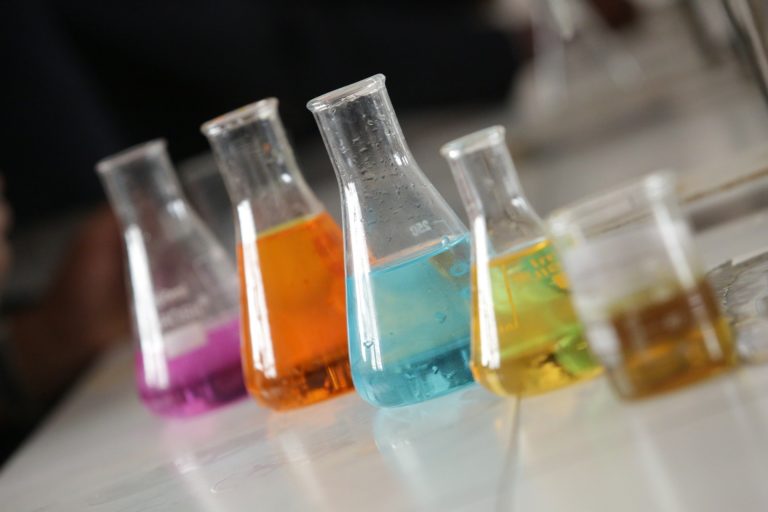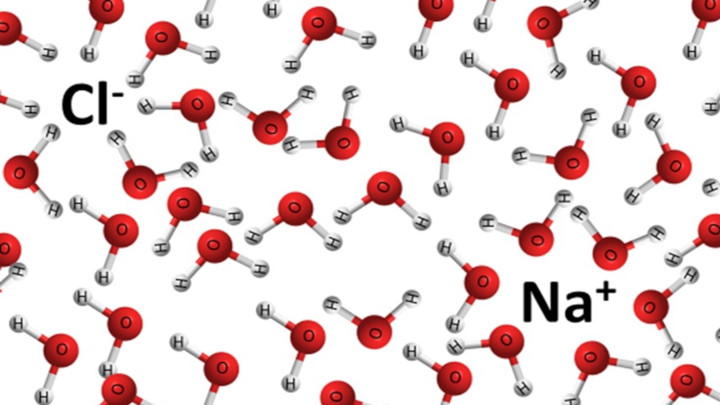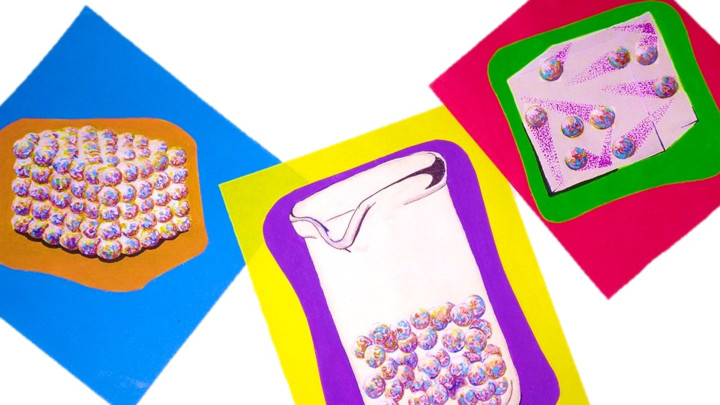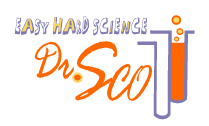What Is an Aqueous Solution?
What Is an Aqueous Solution in Chemistry?
What is an aqueous solution in chemistry? Well, to start, it’s the 4th state of matter. To a chemist, any substance is found in one of the 4 states of matter. You already know about 3 of them: solid, liquid, and gas. And, in chemistry, an aqueous solution is the 4th state of matter. So, you might say that aqueous solutions matter a lot, as they are literally an entire state, or configuration, of this stuff we call matter.
First thing first, I know there are “other” states of matter. To your physics teacher, the 4th state of matter would be called plasma. To your chemistry teacher, the 4th state of matter would be called an aqueous solution. A child playing with corn starch might think that oobleck is the 4th state of matter. Oobleck definitely would win the contest if it were based on how fun the name was to say. Yet, at least in chemistry, the 4th state of matter is an aqueous solution. It turns out that an aqueous solution is an extremely practical concept, perhaps unlike plasma and oobleck, which we don’t really encounter so much in our everyday lives.
What Is an Aqueous Solution: The Simple Answer
So what is an aqueous solution? It simply means dissolved. Yes, the everyday concept of dissolving something. That’s it. The aqueous solution definition means simply that something has been dissolved in water. The aqueous symbol is (aq).
Aqueous solution definition: something is dissolved in water
Aqueous symbol: (aq)
That might seem strange at first that dissolving something in water creates a whole new state of matter. This seems like Kurt Vonnegut’s (yet undiscovered) chemical ice-nine that changes water from it’s liquid state to solid ice, upon mere contact. Cat’s Cradle, in case you missed the Vonnegut reference, is a nonfiction classic from 1963. It’s a short, easy read and very funny.

So why are aqueous solutions important in chemistry? Take a look at the image with the beakers. Is this what you think of when you think of chemistry? Beakers full of things that look like liquids… except they are not called liquids… they are called aqueous solutions. The beakers contain mostly water, but there is some other chemical dissolved in the water, making it a “solution” and no longer a “liquid.” More on that technicality below. For now, you might think about how easy it is to do chemistry just by pouring some beakers of solution together and watching what happens.
Roughly about half of all chemistry experiments are carried out in aqueous solutions, and we call a laboratory where this happens a “wet lab.” Wet as in water. Everything is dissolved in water, and we just pour the beaker contents to make the experiment happen. Easy. Convenient. A common example is an acid-base reaction.
Also, note that you (yes, you), everything around you, and most of the planet contains water with things dissolved in that water. So in reality, aqueous solutions are an EXTREMELY common thing, at least here on Earth.
What are examples of aqueous solutions? Salt water and sugar dissolved in water. Or anything dissolved in water.
What Is an Aqueous Solution: The Science Answer
Take a look at the below science diagram. This is how we represent salt water. It’s an aqueous solution of plain old table salt, chemical formula NaCl for sodium chloride, dissolved in water. First, note there is lots of water, H2O, shown with oxygen atoms in red and hydrogen atoms in gray. Second, note that the NaCl (salt) is dissolved, such that the individual Na and Cl atoms are surrounded by water. There is no Na touching Cl when NaCl is dissolved. The concept of being dissolved, in the chemistry sense, means that the salt has completely broken apart at the atomic level. That is, the individual atoms from the salt are totally surrounded by water.

Now take a look at the structure of the aqueous solution. Much of the water is randomly oriented. Note, however, the structure of the water around the dissolved salt. Around the Cl, the water is oriented with the hydrogen (gray) part in. And around the Na the water is oriented with the oxygen (red) part in. We call these “shells of hydration,” as water (hydration) forms a structured shell around each of the dissolved particles. I will explain why this happens in a moment.
Before continuing the discussion, let’s take a look at what the atoms are doing in the other 3 states of matter. A solid has a totally organized structure with the atoms packed in a regular grid like cars stuck in a severe, big city traffic jam. A liquid has touching atoms, yet they are randomly oriented. And a gas has randomly oriented atoms, which are not touching. So what is an aqueous solution doing? A solution mostly has touching, randomly oriented water molecules, much like a liquid. Yet a solution also has those shells of hydration, which have a highly organized structure, much like a solid. So, a solution has less structure than a solid yet more structure than a liquid. That’s why we consider it to be the 4th state of matter. When you dissolve a solid into liquid water, the structure is neither solid nor liquid, and we call it an aqueous solution.

The reason why water forms shells of hydration is because water is polar. This means water is like a little magnet. The hydrogen sides (gray) are somewhat positively charged, and the oxygen sides (red) are somewhat negatively charged. So water is like a little magnet, and it grabs onto other chemicals through plus-minus attractions. This is a deeper level of understanding what dissolved means. You might note that water surrounds the positively charged Na with the negative sides in, while it surrounds the negatively charged Cl with the positive sides in. Because plus sticks to minus.
What Is an Aqueous Solution: Notation (aq)
The abbreviation for an aqueous solution is (aq). Rarely do we write down the words “aqueous solution,” except when teaching chemistry to get the point across. It’s a long phrase, and the abbreviation is (aq).
The other states of matter have abbreviations too. Like (s) for solid, (l) for liquid, and (g) for gas. So pure water is liquid, and we say H2O (l). As opposed to H2O (s), which we call ice. We put the state of matter after the chemical formula. It’s important to put the state of matter, as water and ice are obviously different things. We cannot call them both simply H2O without confusion.
One funny thing about chemistry is that liquids must be a pure substance. In a chemistry class, we take solid salt NaCl (s) and dissolve it into pure liquid water H2O (l). The result is a salt water solution, denoted NaCl (aq). The solution is neither solid nor liquid. A solution is the 4th state of matter denoted (aq). NaCl (aq) means that NaCl salt is dissolved in water. It would look like a beaker of water, expect that it’s actually salt water.
What is an Aqueous Solution: Final Quiz
Final quiz: What state of matter is the ocean? What is the chemical formula for the ocean?
Don’t say liquid. It’s more than just water, and liquid water means pure water with nothing else in it. There are salts and other chemicals too dissolved in that water. That’s what makes the ocean so alive. It’s not just water.
The ocean is salt water, or salt dissolved in water. So the ocean is, technically speaking, is an aqueous solution. At least in chemistry class.
Let’s assume that the ocean has only NaCl as the salt. It’s not exactly true, as there are really various salts. The chemical formula of the ocean would be NaCl (aq). This means salt dissolved in water. Interestingly, the chemical formula NaCl (aq) doesn’t explicitly show the H2O water, because (aq) means there is lots and lots and lots of water dissolving the salt. If nothing else, the concept of an aqueous solution (aq) saves the average chemist from writing down “H2O” a million times as they work in a wet lab. Recall that a wet lab has solutions which are mostly water, with the important chemicals dissolved into that water to make aqueous solutions.
